Weird Italian Food: Part I
You wouldn’t believe the strange animal parts that Italians bring to the table (and expect people to savor, with gusto).
After 3 months 4 years SIX years of first-hand experience, I can assure you that squeamish eaters won’t last long in this country.
In Piedmont, which is where I live, THE most traditional and frequently consumed antipasto is carne cruda. That’s right, raw hamburger meat on a plate (when you say it in Italian it does at least sound more appetizing – pron: kar-nay kroo-dah). You’ll find it on just about every menu in every restaurant in the Langhe Roero area. The people go crazy around here for a good carne cruda, they even drive all the way from Torino just to eat a plate of the stuff.
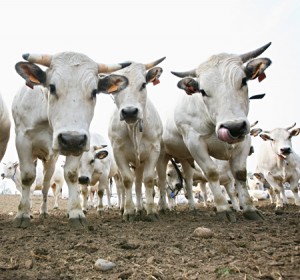 What makes carne cruda so special? Well, let’s break down the ingredients….uh ingredient. The veal comes from a race of cows known as the Razza Piemontese (the Piedmontese Race). These bovine fill the hearts of the Piedmontese people with pride and joy, and are NOT your run-of-the-mill variety. This extra special race is principally raised here (and by here I mean HERE, the city of Alba and the surrounding Provinces of Cuneo and Asti – about 3,000 square miles) . In fact it’s often referred to as carne cruda albese: carne cruda from Alba.
What makes carne cruda so special? Well, let’s break down the ingredients….uh ingredient. The veal comes from a race of cows known as the Razza Piemontese (the Piedmontese Race). These bovine fill the hearts of the Piedmontese people with pride and joy, and are NOT your run-of-the-mill variety. This extra special race is principally raised here (and by here I mean HERE, the city of Alba and the surrounding Provinces of Cuneo and Asti – about 3,000 square miles) . In fact it’s often referred to as carne cruda albese: carne cruda from Alba.
Two hundred and eleven years ago. That’s when the Piemontese started breeding this variety in the region. And we’re not the only ones that think these cows are special. The Razza Piemontese is known on an international level for its fantastic nutritional characteristics. It has a particularly low fat content (.5% – 1% as compared to the average 3% of most bovine), less cholesterol than many white meats and even a lower fat content than many fish. (Maybe I should start a new fad diet based on these white beasts! They’re so darn cute I wouldn’t even have to pay a super model to be the face of the fad.)
Carne cruda was originally chopped by hand (battuto al coltello) and in fancier restaurants you can still find it prepared this way. Home cooks and average trattoria usually grind the meat in a meat grinder or purchase it already ground from their macellaio di fiducia (faithful butcher). Once you’ve acquired your meat, always fresher than fresh (you never hear of anyone getting sick after eating carne cruda) and usually eaten the same day it’s purchased, you dress it with some salt and pepper, a little olive oil and garlic. Adding a bit of lemon is optional and there are opposing schools of thought for and against the use of lemon in this dish (some say it hides the true flavor of the meat, others argue that it “cooks” the bacteria out a little bit and like the subtle lemon flavor). Every family seems to have their own way of preparing carne cruda, some add just a few whole cloves of garlic and take it out before serving, others grind the garlic and mix it right in with meat. Some slice the meat in carpaccio fashion instead of grinding it. It is often served with a healthy grating of truffles in season, but they deserve an article all for themselves… If you come to Alba this is one of the dishes that you should DEFINITELY try!
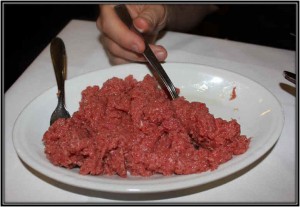 Note from the author: This is one of several articles in a series that I started writing in April of 2005, just a few months after moving to Italy.
Note from the author: This is one of several articles in a series that I started writing in April of 2005, just a few months after moving to Italy.
In those first months I forced myself to eat carne cruda so as not to seem rude and to avoid promoting the negative reputation that Americans have as been wasteful. One of my first (and most memorable) experiences with carne cruda occurred shortly after the famous Meat Shopping Adventure. I offered to help Carmela, the woman who ran the local hangout in Sinio, to help with lunch. She had me mix the meat with the garlic, oil and lemon with my (thoroughly washed) bare hands. I’m sure you can image the satisfying feeling of squishing and squeezing a huge bowl of ground meat between your fingers (we’re talking ground meat for 30 here folks).
But sometimes it’s hard to eat food you’ve prepared (ever killed and plucked a chicken, cooked it and then eaten it? Cleaned chicken livers of their stringy bloody veins, prepared them in fegatini style and then savored every last morsel?) Sometimes I love eating the things I prepare, and sometimes it just can’t stop thinking about the original product or the process.
If the thought of eating a whole plate of raw hamburger meat makes your stomach turn (seconds, anyone?), remember that this meat ISN’T like the normal hamburger meat we Americans eat on a regular basis. These bovine are raised in a very natural way so to avoid the growth of connective tissue that makes meat tough. Moreover, these cows have less of this connective tissue than most other varieties of cows to start with. In fact a good carne cruda has very little of that white stringy stuff in it, but is almost completely red. (I just hate getting connective tissue stuck between my teeth, don’t you?) Nowadays, as long as there’s plenty of fresh bread to go with it, I actually enjoy a plate of the Piemontese delicacy.
Stay tuned for more weird foods that you never would have imagined were typical Italian dishes.

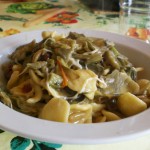
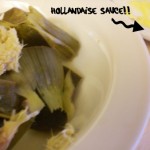
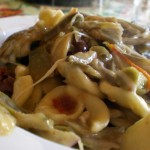
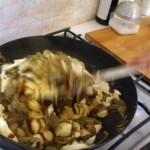
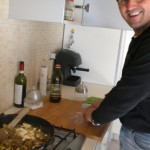
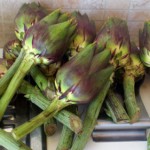
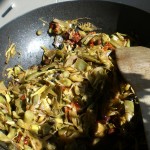
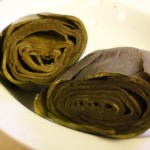
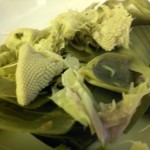
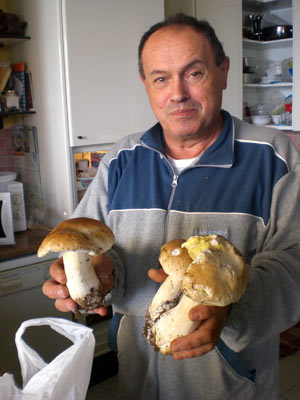
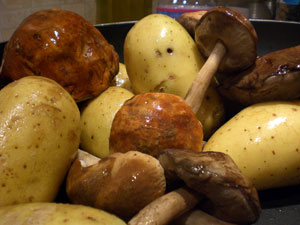
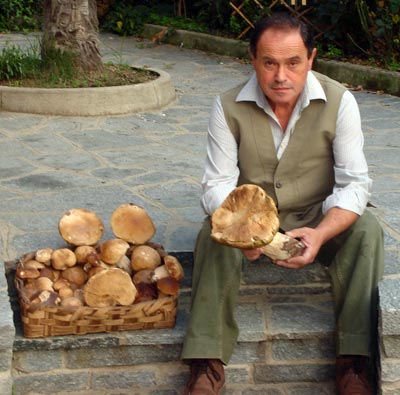
 One of the best things about living abroad is the old-country ambiance that seems to have infiltrated the entire nation. Admit it, when you think “Italy” you think stone streets,
One of the best things about living abroad is the old-country ambiance that seems to have infiltrated the entire nation. Admit it, when you think “Italy” you think stone streets, 

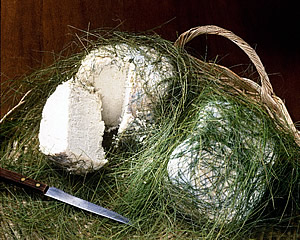 Seirass –
Seirass –